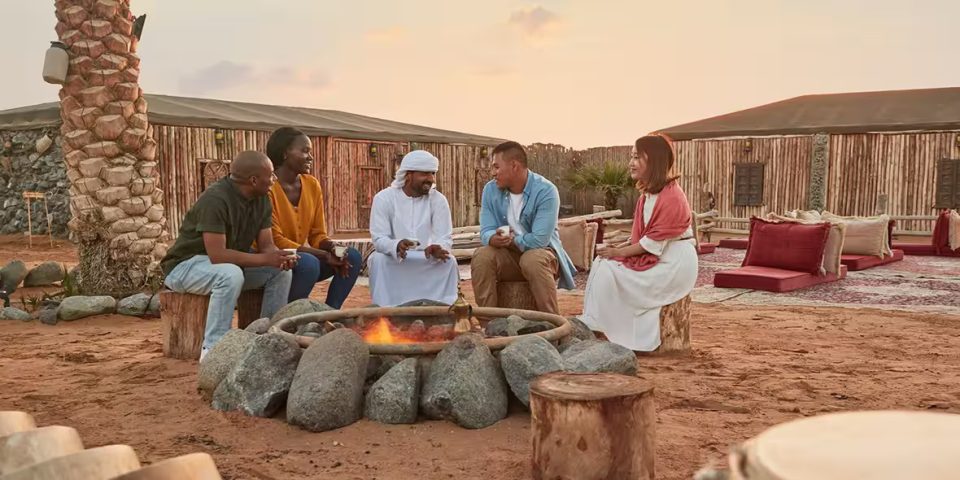Imagine walking through a place where every corner tells a story no postcard has captured. Instead of flocking to the same major destinations and brands, the MICE industry is increasingly craving something more and different, something fresh, heartfelt, and undiscovered. This shift in how people travel, gather, and decide is what’s “valuable” today.

When familiar gets tired
Traditional hotspots are undoubtedly wonderful and primise a great experience, but they’re starting to feel crowded, predictable, and in some regions, even strained. Overtourism is sparking concern. For example, places in Europe are introducing tourist taxes (for example, Venice in Italy and Norway from 2026), and iconic Greek islands are grappling with cruise-traffic impact.
So as these familiar cities bump up against limits (physical, environmental, even emotional) organisers are turning to the less obvious. Spots you’ve barely heard of. Towns off the highway. Regions rich in stories and culture but light on the tourist brochures.
Why going off-road works
The appeal is powerful, and it’s not just about avoiding crowds and queues. These under-the-radar places offer a qholecrange of benefits:
- Lower costs and more flexibility — venues, logistics, accommodation can often be more affordable and negotiable.
- Authentic interactions — with local communities, traditions, food. These aren’t just backdrop scenery, they are part of the experience.
- Cultural immersion and storytelling — which for many attendees now matters more than simply ticking boxes or showing up.
- New legacies — events in smaller or less well-known places can leave a lasting impact: economic, social, cultural.
Organisers see this as less of a compromise and more of an opportunity. As Don Welsh, president & CEO of Destinations International puts it, “Lesser-known destinations are not merely alternatives; they represent an exciting growth opportunity for the MICE sector.”
MENA’s time to shine
This trend is especially good news for countries in the MENA region. This part of the world holds a treasure trove of lesser-known gems, and many are already building the infrastructure, reputation, and capacity to host global events. Here’s how MENA nations can capitalise on this trend:
- Untapped destinations with stories to tell. From the desert landscapes to the archaeological wonders, there is so much more beyond the major iconic cities offering fresh aesthetics, culture, untouched nature and dramatic landscapes.
- Seasonality vs overtourism. Key cities like Dubai, Riyadh, Cairo, or Marrakech are already busy. Spreading events into less congested locations helps distribute tourism, reduce pressure on major urban centres, and preserve natural and cultural heritage.
- Flexibility and cost efficiencies. Smaller cities often have lower rental costs, less expensive labour, and more room to innovate with spaces. For event planners working with tight budgets, doing something off the mainstream route in MENA could be hugely appealing.
- Leveraging local culture. Many MENA countries are rich with academic institutions, creatives, historians, artisans, culinary traditions. The magic lies in events that weave in local knowledge, storytelling, food, ceremony, and music. The connection between planners and local experts will also no doubt enhance both attendee experience and local benefit.
- Legacy and sustainable growth. MENA governments and tourism boards increasingly focus on sustainable tourism, and using events to build long-term benefit: jobs, infrastructure, heritage conservation. If you host in a smaller destination, you have more room to ensure that growth is inclusive, that leaves a positive mark.
- Differentiation in a crowded market. With so many locations globally competing for MICE attention, MENA stands out by offering something different, and largely, that includes the unexpected, the beautiful, and the underexplored.
To tap into the potential of lesser-known destinations in MENA, countries and individual destinations are pulling key levers. The goal is to make these areas more accessible and appealing for tourism and events.

Unlocking opportunities
MENA countries can tap into the growing trend of off-the-beaten-path destinations in the MICE world by improving connectivity and infrastructure in lesser-known areas. This includes upgrading roads, airports, internet, lodging, and facilities. Building awareness through marketing and storytelling is also crucial, showcasing local human stories via social media and partnerships. Collaboration with local communities, academies, and artisans can bring unique visions to life for events.
Sustainability and capacity management are also vital to ensure growth doesn’t harm what makes these offbeat areas special. Responsible tourism, environmental care, and cultural preservation will matter increasingly to event planners and attendees. Offering incentives like tax breaks, streamlined permissions, or subsidies can also lure events to these unique destinations.
The rise of off-the-beaten-path destinations in the MICE world is a defining shift. For MENA, the timing couldn’t be better with the region’s tourism boom, development, and experiences on offer. With rich heritage, varied landscapes, and diverse cultures, many MENA destinations are ideally placed to become the next big thing by leaning into what makes them unique. So if you’re looking for fresh travel inspiration or seeking that “wow” factor, don’t just look to the usual suspects. Somewhere off the well-trodden path might just be where the real adventure awaits.



